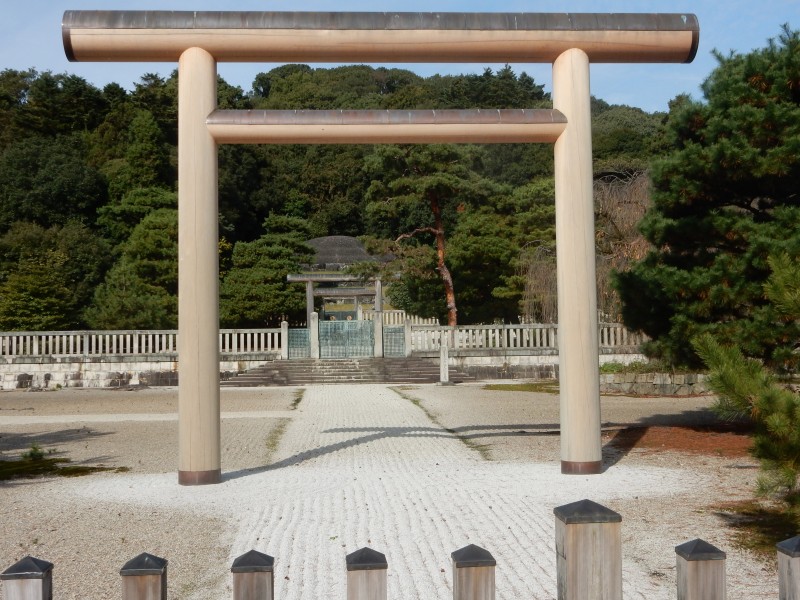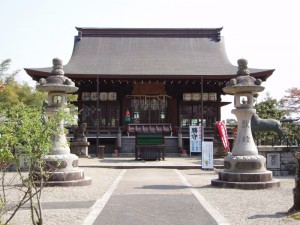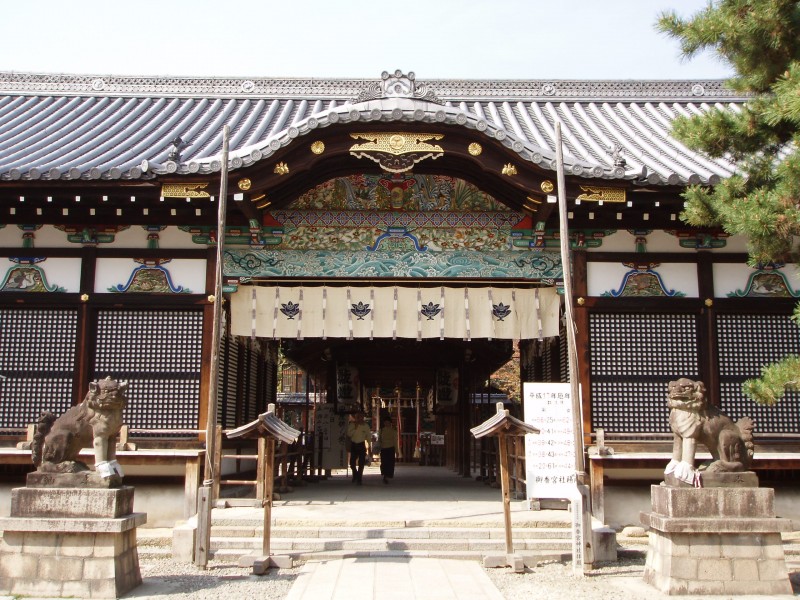
Emperor Meiji’s burial mound, exemplifying the ancestral cult married to animistic worship which characterises Shinto. As symbol of the nation, former emperors are revered as kami and since they return to nature their graves act as features of the landscape.
Green Shinto readers are cordially invited to join me for a haiku walk on Dec 12, jointly organised by Writers in Kyoto and the Hailstone Haiku Circle. Hailstones is an English-language haiku group based in Kyoto, who have been meeting off and on since 2000. One of their most popular events is their outings known as ‘Ginko’ in which a leisurely stroll is combined with haiku composition.
On Dec. 12 the walk will take in the burial mounds of the first and last emperors to reside in Kyoto (Emperors Kammu and Meiji), which exemplify the mix of ancestral worship and animism that characterises Shinto. Also part of the itinerary will be two fascinating shrines, Nogi Jinja and Gokonomiya Jinja.
Walking time is one and a half hours, though there will be several stops along the way for penning poetry which will almost double that, allowing us to end for a late lunch in Fushimi. It should be an enjoyable amble, and it should be a fun social occasion as well as an inspiring one. Walking and writing – a great combination!!
*******************************
‘Emperors and Generals’ Historical Ginko, rendezvous 10:30 Kintetsu Tambabashi Station just outside the ticket barrier (Keihan Tambabashi is just next door).

Nogi Jinja, celebrating Meiji’s victorious general who chose to join his master in death by committing ritual suicide
First we will stroll to E. Kammus’ tomb (the founder of Heian-kyo), then skirting G. Toyotomi’s Fushimi-Momoyama Castle we pass through some woods to E. Meiji’s tomb (he was enthroned in Kyoto, but moved away to Tokyo) together with Empress Kōken’s mound nearby, then down a slope to Nogi Jinja (commemorating G. Nogi, who fought for E. Meiji) and on to Gokonomiya Jinja (named by E. Seiwa) for some spiritual water. We hope to share haiku over lunch, perhaps at one of Fushimi’s famous sake breweries.
The walk will be jointly led by John Dougill, representing Writers in Kyoto, and Stephen Gill of Hailstone Haiku Circle. Enquiries: John Dougill dougill@mbox.kyoto-inet.or.jp. Cell-phones on the day: John 080 4028 3158, Stephen 080 5334 0990.

Entrance to the Honden at Gokonomiya Shrine, which boasts some splendid Momoyama decoration as well as sacred water

the twelfth of the twelfth
two bows, two claps, one poem
looks fun, count me in
The following morning there was a bright sunny start to the day, and six haiku poets set out with fresh hearts ready to pen their thoughts on a walk that traversed the course of centuries.